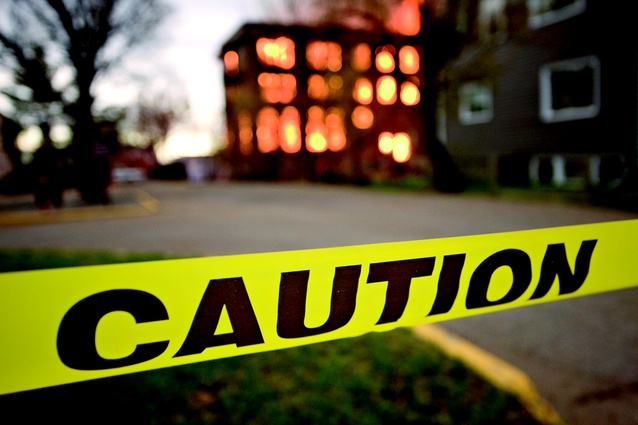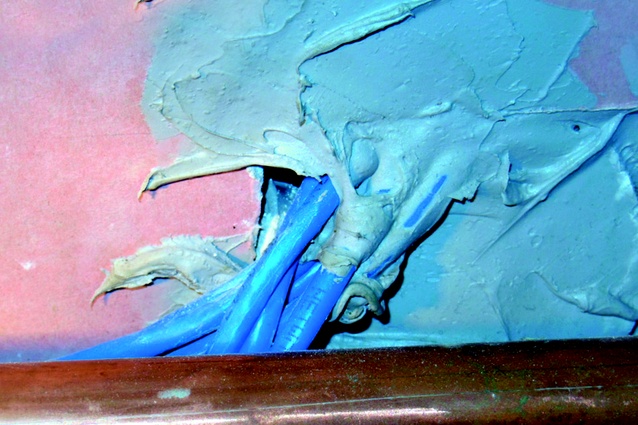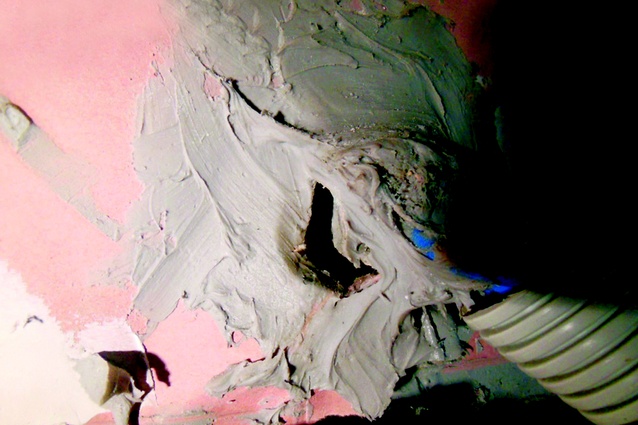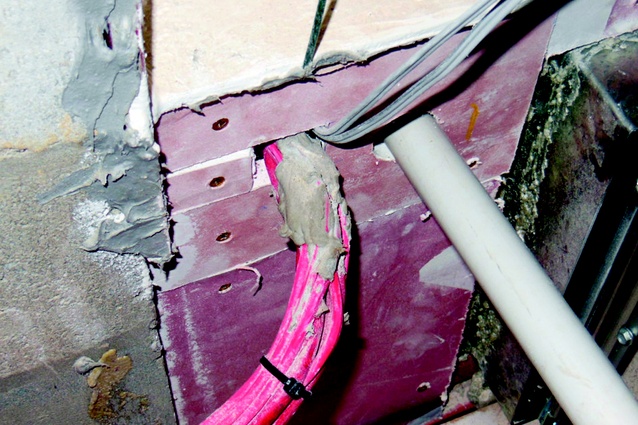A passive problem
Non-compliance with passive fire protection requirements is as serious an issue as the leaky building syndrome, some industry professionals believe. Building Compliance & Fire Consulting director Ron Green, who is also an Independently Qualified Person (IQP), has 33 years’ experience in the fire protection and building compliance industry. As part of his work as an IQP, Green inspects active and passive systems – such as fire separations, which are designed to contain a fire within an area for a specified time; known as the Fire Resistance Rating (FRR) – in buildings. The inspections form part of the warrant of fitness each building undergoes. However, in around 99 per cent of buildings, Green encounters non-compliance issues with the integrity of the passive fire protection (PFP) systems in place. The cause of these issues, particularly with new constructions, arises from a lack of knowledge, planning and education among all parties involved in the building process, Green says.Amendments to the Building Act in March 2012 required building owners to list fire and smoke separations as a separate specified system (SS), previously included under ‘means of escape’. Inspections were to confirm that they complied by March 2013, however, Green says the inspections were neglected because of a lack of knowledge and understanding.
“Now, a major focus for IQPs has turned to fire and smoke separations – but where are they?” he asks. “When I go into a 10-storey building and look for fire separations I find that a lot of them aren’t right. The walls are generally constructed OK, it’s the penetrations – services, cables, PVC pipes, ducts– that aren’t. They have to have a system around them such as a fire collar or a wrap that expands when heated, and seals the hole so the fire [and smoke] doesn’t spread. That is what passive fire protection does. “
Winstone Wallboards technical manager Hans Gerlich says there is “a disconnect” between design and implementation. “The fire design is done [by a fire engineer], the architect translates that into a practical way of constructing a wall and then the sub-trades come in. They need to run some plumbing or wiring, so they just go straight through the wall and fix it up as best they can – or think they know how to do it. So these fire barriers are already compromised. Alternatively, services go in before the fire separations and the partition contractor is made responsible for ‘sealing’ all fire penetrations without details being available and without having the appropriate skills. Fire sealing of penetrations is often an after-thought and should be considered up front at design and drawing stage. ”
Building around structural members also compromises fire rated systems. “You might have a building with metal roofing purlins. The purlins run right through the firewall and no one gives it any thought. If you get fire on one side, not only does the heat conduct, but the purlins also expand and start pushing. You might have a 90 minute fire rated wall but there’s no way you can maintain the integrity of the wall with all those purlins going through. That sort of thing should be designed differently on the drawing board.”

Green has just trained many council inspectors in passive fire protection, with a focus on fire stopping service penetrations. Recently he visited a new office block where plasterboard had been installed after the ducting was put in and found that the plasterboard had not been screwed to the frame according to the tested system requirements.
“They should have put the gypsum plasterboard in first, but when you’re building, it’s first-in first-served. Screws (as specified by the manufacturer) fit the plasterboard to the framing. In a fire, poorly fixed plasterboard will fail prematurely and the penetration detail will also fail. If you install according to the manufacturer’s instructions you achieve the published Fire Resistance Rating (FRR).”
In one hospital he says none of the fire stopping was correct. This sort of thing happens when, “tradesmen go to a shop and they’ll say – ‘Oh that’s fire rated mastic (sealant)’ but that mastic might only be for a gap and is no good for penetrations.” Tested products (testing costs are commonly upwards of $20,000) are reliable only if used with the correct materials, approved products and specified dimensions. Some mastics for example need to be used with two layers of plasterboard.
“Most of our walls are single layer, so then you have to put a patch around it to get the depth for the sealant. And the sealant has to be a minimum thickness for the cable. But the poor tradesman doesn’t know that. In a fire that would just burn out.”
In the Act people are accountable for their work but the problem is there is often no separate sign-off for passive fire protection, Green says. He is working with one major council towards solving the problem. As chairman of the Association of Building Compliance (ABC), he and Gerlich are also working with the Ministry of Business, Innovation and Eemployment, the Fire Protection Association of New Zealand, and other organisations to get industry education underway for building owners and builders. “The challenge is how to get an electrician or plumber trained to know about passive fire protection systems,” he says.
NZQA qualifications are currently under review and modules covering PFP will be included in future training, which he hopes will invoke a more informed response than from tradespeople to questions about fire penetrations than, “Oh you have to squirt some gunk in there.” Gerlich thinks further design thought is needed to include practical detailing of PFP in consent application plans. “Fire engineering stops at the fire resistance rating and then it’s up to the less knowledgeable people to take it into how the building is constructed. You get poor detailing and then on site the sub-trades bolt through anything that gets in their way. There is not enough clear information on the consented drawings. Designers should provide it and building control authorities should ask for it.”
He thinks a set of guidelines is needed for the correct construction, penetration and fixing of passive fire protection systems. “I liken it to leaky buildings. We find out about them when it rains 50 times a year. We’re not finding out about failed fire protection systems because we don’t have fires that often, but a single event could be catastrophic. ”
Recent changes to the New Zealand Building Code may require that when alterations are done to existing buildings, the “means of escape” for the whole building be reviewed [that includes early warning systems, exits, and fire and smoke separations] Green says. “Unless competent persons are employed to install fire stopping systems as per the manufacturer’s tested requirements, together with a competent sign off, this will add to the 99 per cent failure rate of new buildings.”













